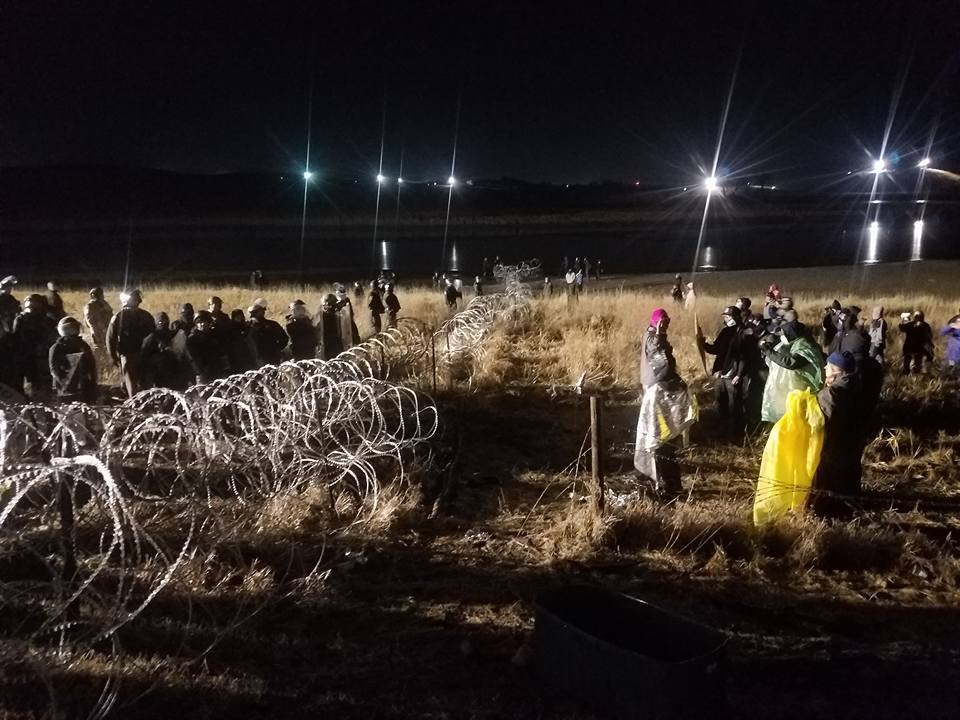By Keith Schneider, Circle of Blue

Photograph by Dark Sevier
Heavy snow and winter cold settled this month on thousands of Native Americans and their supporters encamped on the banks of the Cannonball River, some 30 miles south of Bismarck, North Dakota. Nearby, the Missouri River slipped past. The river’s clean waters serve as the wellspring in what has steadily become one of the storied confrontations over energy development, justice, finance, and human rights in the American West.
Viewed in one dimension, the standoff over construction of a 1,172-mile, $US 3.8 billion oil pipeline pits thousands of protesters massed on the prairie to safeguard a sole source of tribal drinking water from the fossil fuel industry and its allies in government and finance. But so many other dimensions of history, law, human rights, justice, finance, and climate change motivate the campaign to halt the Dakota Access pipeline. What has emerged on the wintry plains of North Dakota is a distinctive, if not unique event in the history of American environmentalism, and a seminal struggle over civil rights and Native American sovereignty.
